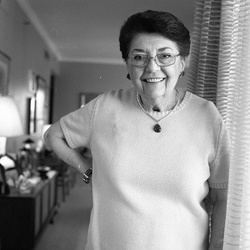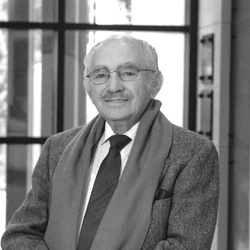Bistrita
Pronounced “BEES-treets-ah” (German: Bistritz, Hungarian: Beszterce, Ukrainian: Би́стриця (Bistritsa), Polish: Bystrzyca, Yiddish: ביסטריץ (Bistrits), Hebrew: ביסטריצה)
For centuries, the Saxon (German), Ottoman (Turkish), Transylvanian and Hungarian rulers and residents of Bistrița prohibited Jews from living there. Only in 1848 were Jewish families finally allowed to settle. A small Jewish community of roughly 230 people existed by 1870, a time when the region of Transylvania had been incorporated into the Austro-Hungarian Empire as part of the Kingdom of Hungary.
The Jewish community of Bistrița established a small cemetery in the late 1800s and the synagogue built in 1893 was one of the largest in Transylvania. By 1900, the approximately 1,300 Jews in the town made up more than 10 percent of the total population of about 12,000. Around the same time, the Zionist movement for the creation of an independent Jewish state spread across Europe. The first Zionist youth club in Bistrița started in 1901.
During World War I (1914-1918) 138 Jewish men from Bistrița were conscripted to fight for the Austro-Hungarian army. Twelve were killed in action. After the war, the Austro-Hungarian Empire collapsed and Transylvania (including Bistrița) became part of Romania.
The Jewish community of Bistrița continued to grow in the 1920s and 1930s, with a Jewish population of about 2,000 making up roughly 15 percent of the total. Many joined the growing number of Zionist youth clubs and in 1924 the community founded a Jewish school.
Survivor Zoly Zamir was born in a village outside Bistrița in 1922 where as a child he grew up speaking the multiple languages of the multi-ethnic area. At home his family spoke Hungarian and the Jewish language of Yiddish, and many in the local area also conducted their lives and business in Romanian or German.
After World War II started in September 1939, the nationalist government in Hungary aligned itself with Nazi Germany by passing discriminatory race laws and subjecting Jewish men to forced physical labor. In August 1940, Germany rewarded Hungary by transferring Bistrița and northern Transylvania from Romania to Hungary.
About one year later, in the summer of 1941, Hungary deported Jewish men who could not prove Hungarian citizenship to German-occupied western Ukraine. There, mobile killing squads shot and killed more than 23,000 Jews, including locals from Bistrița. Jewish men who remained in the town were conscripted for forced labor, working on outdoor construction projects in freezing temperatures without enough food, shelter or medicine.
In March 1944, German forces occupied Hungary. Prominent Jewish citizens of Bistrița were immediately deported to camps in western Hungary. Meanwhile, thousands of Jews from the town and surrounding villages were forced to a ghetto outside the town where they lived amongst barracks and pigsties. Three months later, in June 1944, the ghetto was liquidated and all its surviving inhabitants deported on cattle cars to the killing center of Auschwitz-Birkenau.
After the war, Bistrița was transferred back to Romania. The majority of Jews who managed to survive emigrated to Israel, the U.S. or Canada.
Bistrita: Photographs & Artifacts
Destroyed Communities Memorial Slope
Bistrita: Survivors

The [U.S.] State Department put an awful lot of impediments in anything that we tried to do. … To this day I have a lot of angry feelings about the fact that it was made so difficult for us to come here, and it was made impossible for some of our friends there. Some of them were imprisoned in camps back in Europe and ended up dying in the Holocaust.

I remember the first Saturday that I took a walk with my mother in Tel Aviv in 1948. The stores were all closed and she asked me, ‘Zolyke, is all of this Jewish?’ I said, ‘Yes.’ She was very, very impressed with that, that the stores were Jewish, the police were Jewish. Everybody was Jewish.